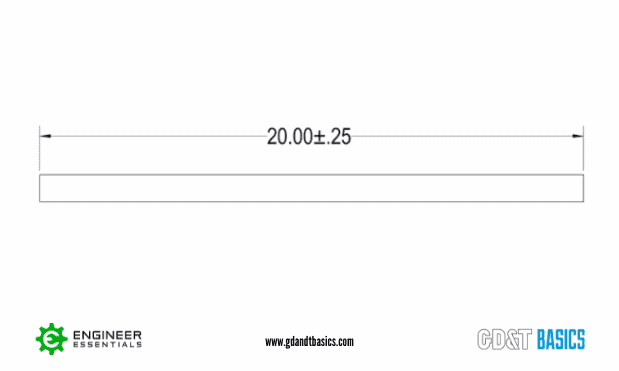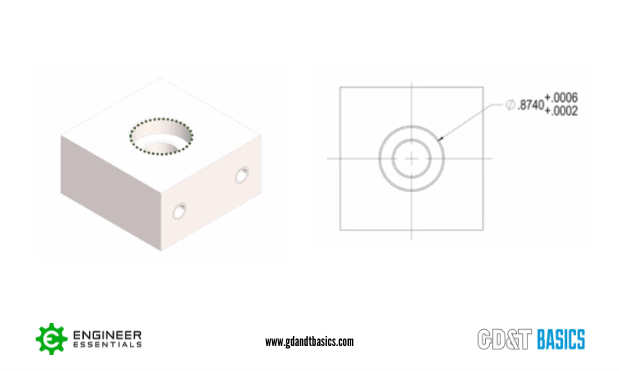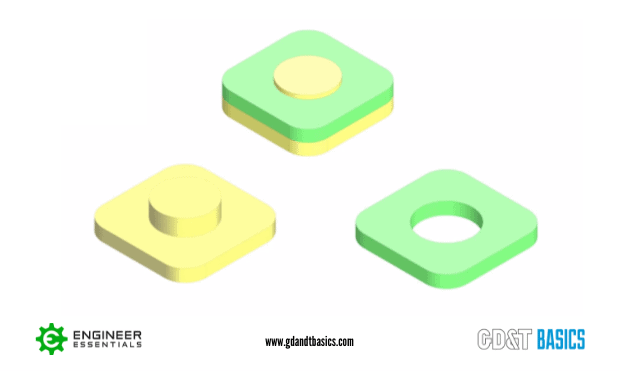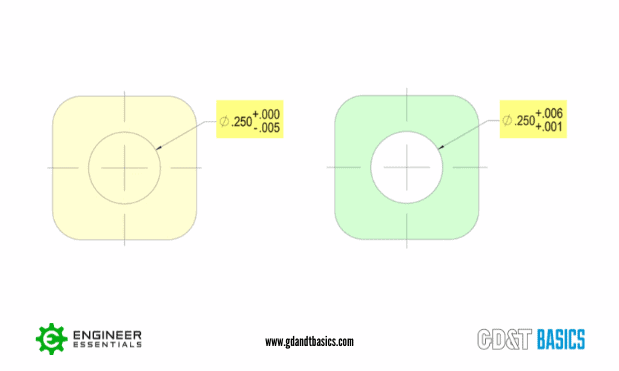Why use tolerances? In our previous article, “What is a Tolerance?” we introduced the concept of manufacturing tolerances and why they are necessary. In this article, we are going to focus on the benefits of using tolerances in our part drawings.
A tolerance is defined as the acceptable range of dimensional variation that still allows for proper function. This variation is represented as the maximum and minimum limits for the dimension. Knowing these limits is necessary for manufacturing and inspection. We will discuss below, several benefits of using tolerances.
1) Tolerances communicate the manufacturing limits of our part. This is the first and most obvious benefit of using tolerances. When you place a tolerance on a dimension in your drawing, you are giving a target dimension and the upper and lower limits of that dimension. The manufactured part must adhere to these limits. When it is inspected, the dimensions and tolerances give the criteria to know whether the part is acceptable or not. Figure 1 is an example of how a length tolerance can be shown. In this example, the length of 20.00 is given, with a tolerance of +/- 0.25. This corresponds to a target length of 20 with 19.75 and 20.25 as the length limits.

2) Tolerances help convey critical dimensions on our part. When we look at a feature on a part drawing, the tolerance on the dimension defining the feature will help us determine how important that feature is. It also gives us a clue for how we need to manufacture it. Consider the pocketed feature on the part in Figure 2. If there was no tolerance on the diameter dimension, we would not have answers to the following questions:
- What manufacturing process do we need to use?
- Could it be drilled by hand?
- Does it need to be reamed?
- Will the hole be too large or too small to fit the application?
- Will our customer reject the part?
- Will our supplier use an extremely expensive method to produce this, when maybe it’s not that important?

Now, look at the tolerance on the dimension in Figure 2. The limits for the diameter are 0.8742 to 0.8746. This is only a 0.0004 total tolerance, which is extremely tight. In this case, the tolerance given indicates that the part will likely cost us more to manufacture due to the specialty process needed. It also tells us that this feature is functionally critical, and may be used for a press fit. The tolerance tells us that this dimension is important, and we need to treat it as important in the manufacturing process.
3) Tolerances ensure assembly with other parts. This is the most important function of a tolerance. Take a look at the yellow and green parts in Figure 3. They are designed to be assembled with the shaft of the yellow part inserted into the hole of the green part. Without tolerances, there is a high probability that the parts will not fit together. The shaft of the yellow part could be slightly too big, or the hole of the green part could be slightly too small, and it would not be possible to assemble them.

To ensure that the two parts will assemble together correctly, tolerances must be added to their drawings. Figure 4 shows the dimensions and tolerances for the shaft of the yellow part and the hole in the green part.

The shaft on the yellow part has a 0.250 diameter with an upper limit of 0.250. The hole in the green part has a 0.250 diameter with a lower limit of 0.251. So, with the shaft at its largest allowed diameter and the hole with its smallest allowed diameter, there will still be a 0.001 diametrical clearance. With these tolerances, the hole in the green part will always be larger than the shaft on the yellow part. As long as the tolerances are met, the two parts will always fit together. It is the designer’s responsibility to ensure that the parts are designed so that they will fit together, and to communicate the requirements through proper tolerancing on the part drawings.
4) Tolerances define the acceptance criteria for part inspection. Looking at this from a legal standpoint, drawings are contracts between the purchaser and the manufacturer/supplier. If the manufacturer is unable to meet the tolerances specified on the drawing, they would not be able to fulfill the order. Meeting the tolerances is the difference between accepting (and paying for) the parts, and rejecting the parts completely.
In summary, tolerances are vital for manufacturing, inspection, and end use of the part. They communicate manufacturing limits and indicate critical dimensions and features, they ensure proper fit and function of the manufactured parts, and they define the acceptance criteria for part inspection. Without proper tolerancing, manufactured parts may not be acceptable, and time, money, reputation, and business could be lost.
Interested in Learning More About Tolerances and Engineering Prints?
Check out our Print Reading and Tolerances Course
LEARN MORE
